Efficient Feature-Based CAD Translation : Strategy and solution
Imagine a world where transferring CAD designs between diverse systems is no longer a struggle but a seamless process. Picture a scenario where design changes are effortlessly accommodated, even when models are opened in a new CAD system. This is not a distant dream but a reality made possible by Proficiency solution. Dive in to discover how.
The Challenge: CAD Data Conversion with all design intent
Design teams globally grapple with the challenge of efficiently transferring CAD designs between different systems. Even with cutting-edge CAD systems and translation capabilities, reacting to design changes often becomes a bottleneck.
Why Change Your CAD System?
There are various reasons why a company might consider changing its CAD authoring system:
- Corporate Acquisitions: Mergers can result in multiple CAD systems within a single organization.
- Legacy Environments: The need to consolidate multiple CAD systems into one.
- PLM Migration: A shift requiring CAD system harmonization.
To support these initiatives, converting legacy CAD assets while retaining their intelligence is crucial.
The Traditional Methods: Inefficient and Costly
Traditional methods of CAD data conversion have their limitations:
- Geometry Translation: Using standards like STEP is quick but loses the intelligence in the legacy data.
- Manual Remodeling: This is a slow, costly, and error-prone process.
What is Feature-Based Exchange?
When it comes to CAD data exchange, not all methods are created equal. With Proficiency, you elevate your CAD data transfer to the next level by leveraging feature-based exchange. Here's what that entails:
- Geometry: Exact shapes and dimensions are preserved.
- Features: Complex structures are maintained.
- History: Construction sequences are retained.
- Sketch Relations: Relationships between entities are conserved.
- Manufacturing Information: All relevant manufacturing data are transferred.
- Metadata: Descriptive or instructional information is included.
- Assembly Information: Relationships between parts are kept intact.
- Drawings: All related drawings are also translated.
Proficiency's feature-based exchange ensures a more accurate and comprehensive data migration or CAD collaboration process, optimizing design continuity.
Enter Proficiency: The Future of CAD Conversion
ITI's Proficiency solution changes the game:
- Feature-Based Conversion: Transfers design intelligence between CAD systems.
- Data Auditing: Offers source data auditing and automated conversion reporting.
- Automated Remastering: Saves up to 75% of the time spent on manual remastering.
Proficiency's patented technology automates the CAD data conversion process with unprecedented efficiency.
In conclusion, Proficiency offers a robust and efficient solution for CAD data conversion. It not only saves time but also ensures the quality and accuracy of translations. CAD Interop, with its extensive experience in CAD data exchange, recognizes the unparalleled capabilities of Proficiency in meeting the complex needs of design teams.
CADIQ: Ensuring Quality During Feature Based CAD Translation
While Proficiency excels in CAD data conversion, CADIQ serves as another indispensable tool for feature-based trading. CADIQ specializes in identifying discrepancies and issues in CAD models.
- Issue Identification: Highlights unacceptable changes introduced during feature swapping, migration, or manual remastering.
- Model Comparison: Compares native CAD models to identify differences between them.
- Quality Assurance: Ensures that the transferred CAD model is of the highest quality.
With CADIQ, you can be confident that your CAD models maintain their integrity and quality throughout the conversion process.
In conclusion, both Proficiency and CADIQ by ITI offer robust and efficient solutions for CAD parametric conversion and validation. While Proficiency excels in saving time and ensuring the quality and accuracy of translations, CADIQ adds another layer of quality assurance by identifying issues and discrepancies in CAD models. CAD Interop, leveraging its extensive experience in CAD data exchange, recognizes the unparalleled capabilities of both Proficiency and CADIQ in meeting the complex needs of design teams.
Unlocking the power of design intent in CAD migration and collaboration processes is a high-stakes game. Enter Proficiency, a standout solution. It automates reporting, including analytics and validation through physical property comparison. This unique toolkit helps designers identify and fix flawed CAD methodologies, simplifying the translation of certain parametric features.
Dive into a transformative experience that redefines how we perceive the exchange of 3D models and their associated plans between CAD software. Unlock the gateway to automating an impressive 95% of parameterized functions within a model. As for the remaining 5%, discover the solutions that ensure a fully functional model.



